As I wandered through Palermo’s narrow, shadowy alleyways with evening settling in, I stumbled right into a food lover’s dream. The air filled with the irresistible smells of sizzling meat, fresh seafood, and baking dough, and I couldn’t help but drift deeper into Sicily’s legendary street food scene.
Markets like Ballarò, Vucciria, and Capo in Palermo serve up some of the best street food in Italy—honestly, maybe even the world.

Image Source: Tripadvisor
I never expected the city to change so much at night. The daytime chaos of vendors shouting over their stalls faded, replaced by locals huddling around food carts, swapping stories and laughter over cones of crispy arancini and slices of sfincione (that’s Sicilian pizza, if you’re wondering). My senses nearly short-circuited, in the best way.
Sure, I’d read about Sicilian street food before my trip, but nothing really prepared me for the flavors and wild specialties I found that night. I tried the infamous pani ca meusa (spleen sandwich) and sweet cannoli filled right in front of me. Each bite tasted like centuries of Arabic, Norman, and Spanish influence—Sicily’s history served up right on the street.
This wasn’t just dinner. It felt like eating a history lesson, one wrapped in Palermo’s ancient stones.
Immersing Myself in Palermo’s Vibrant Street Food Scene
Palermo’s street food culture hooked me the second I stepped into its busy markets. The mix of rich aromas, colorful stalls, and chatty vendors created an experience you just can’t find anywhere else in Italy.
Savoring the Spirit of Quattro Canti
Right at the crossroads of Palermo’s old district, Quattro Canti became my starting point for a culinary adventure. Those four baroque corners set a dramatic scene as I bit into my first arancini—crispy rice balls with savory ragu tucked inside.
Locals pointed me to a tiny shop where I tasted panelle, classic chickpea fritters that just melted away in my mouth. The vendor told me they’d been frying them up the same way for generations.
While I snacked, I watched street performers and artists gather around the square. The collision of food, history, and street culture created a sensory overload that just screamed “Sicily.”
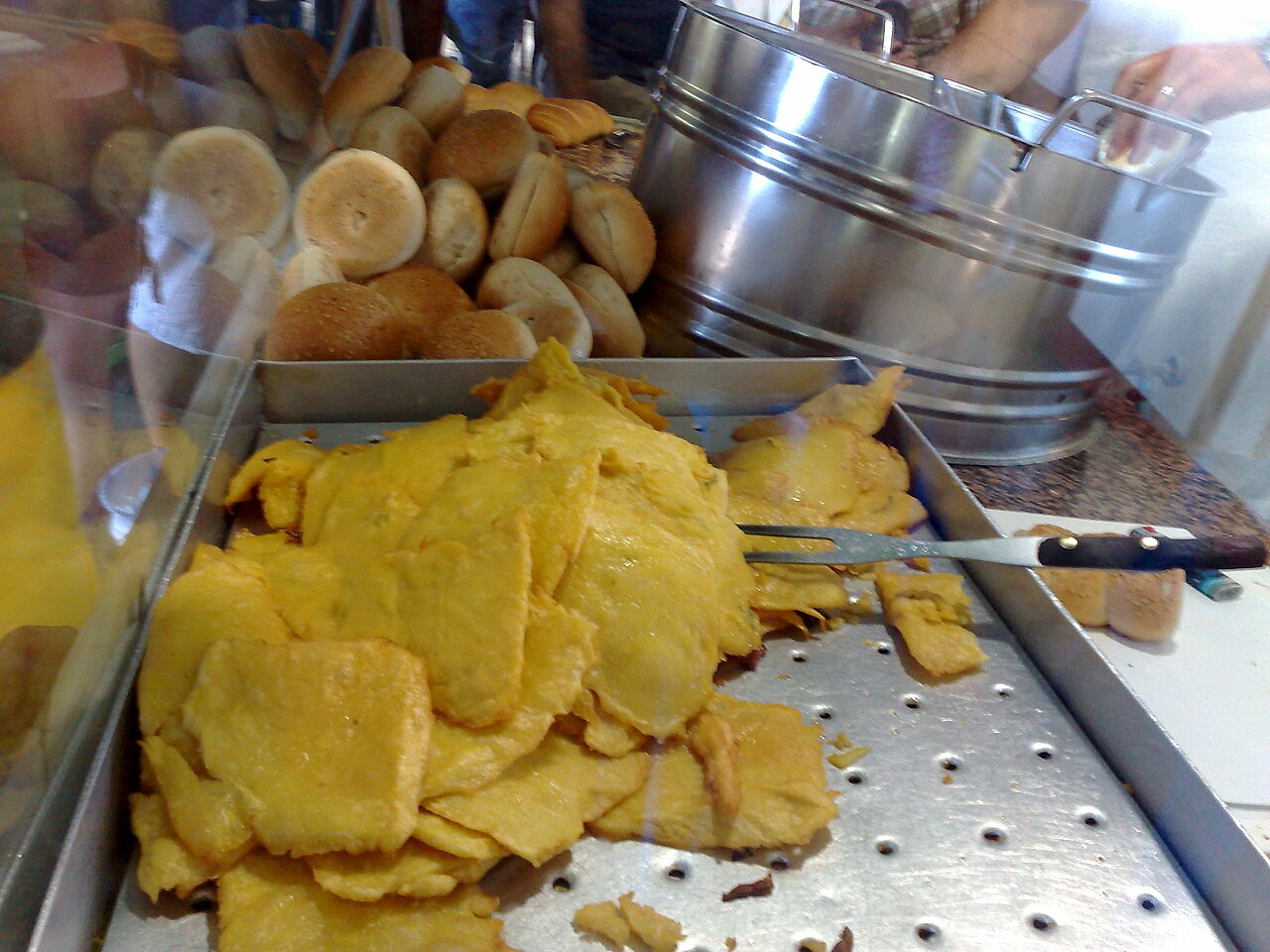
Image Source: Wikimedia Commons
Bustling Atmosphere of Capo Market
Capo Market buzzed with life as I squeezed through its tight lanes, every stall packed with food. Vendors shouted in Sicilian dialect, their voices blending into a market symphony.
I found a popular stall and finally tried pani ca meusa—a bread roll stuffed with spleen, Palermo’s weirdly beloved specialty. It looked intimidating, but honestly, the taste surprised me.
Stalls overflowed with fresh seafood—swordfish, red prawns, sardines—gleaming on piles of ice.
The market’s rhythm felt ancient. Elderly women haggled, tourists snapped photos, and every turn revealed something new, from blood oranges to pungent cheeses.
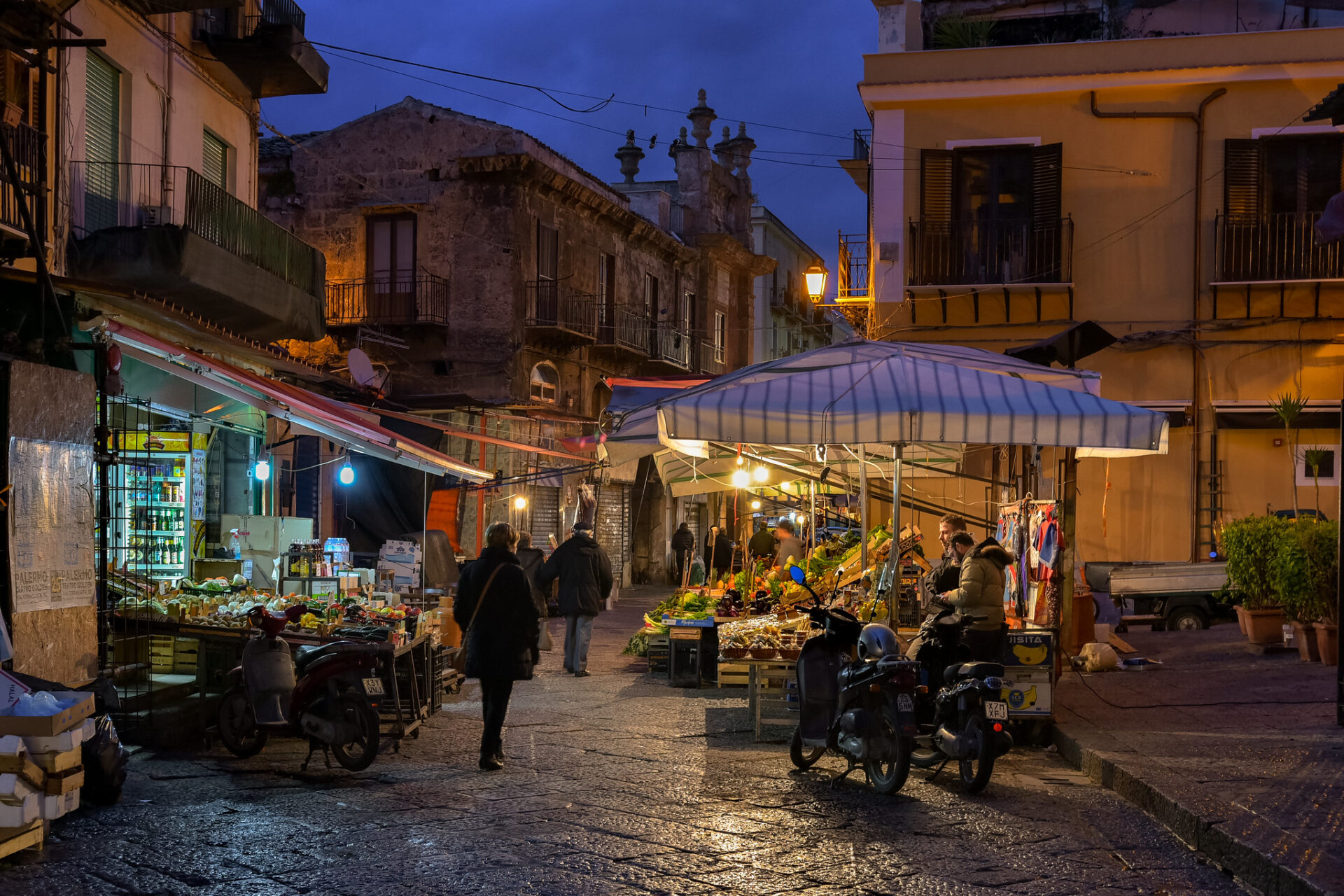
Image Source: Flickr
Walking Tour Through Centro Storico
I joined a small food walking tour through Centro Storico, and that really opened my eyes to Palermo’s culinary roots. Our guide, Maria, shared stories for every dish as we ducked into hidden spots you’d never find on your own.
“Food here tells our history better than any book,” Maria said, handing us cazilli—potato croquettes with a Spanish twist.
We wandered through Vucciria market, another legendary food haven. I tasted sfincione, Sicily’s answer to pizza, with its thick bread base, tomatoes, onions, and caciocavallo cheese. Pure comfort.
The tour ended with cannoli filled right in front of us—fresh ricotta, no shortcuts. Maria swore this was the only way to eat Sicily’s most famous dessert.
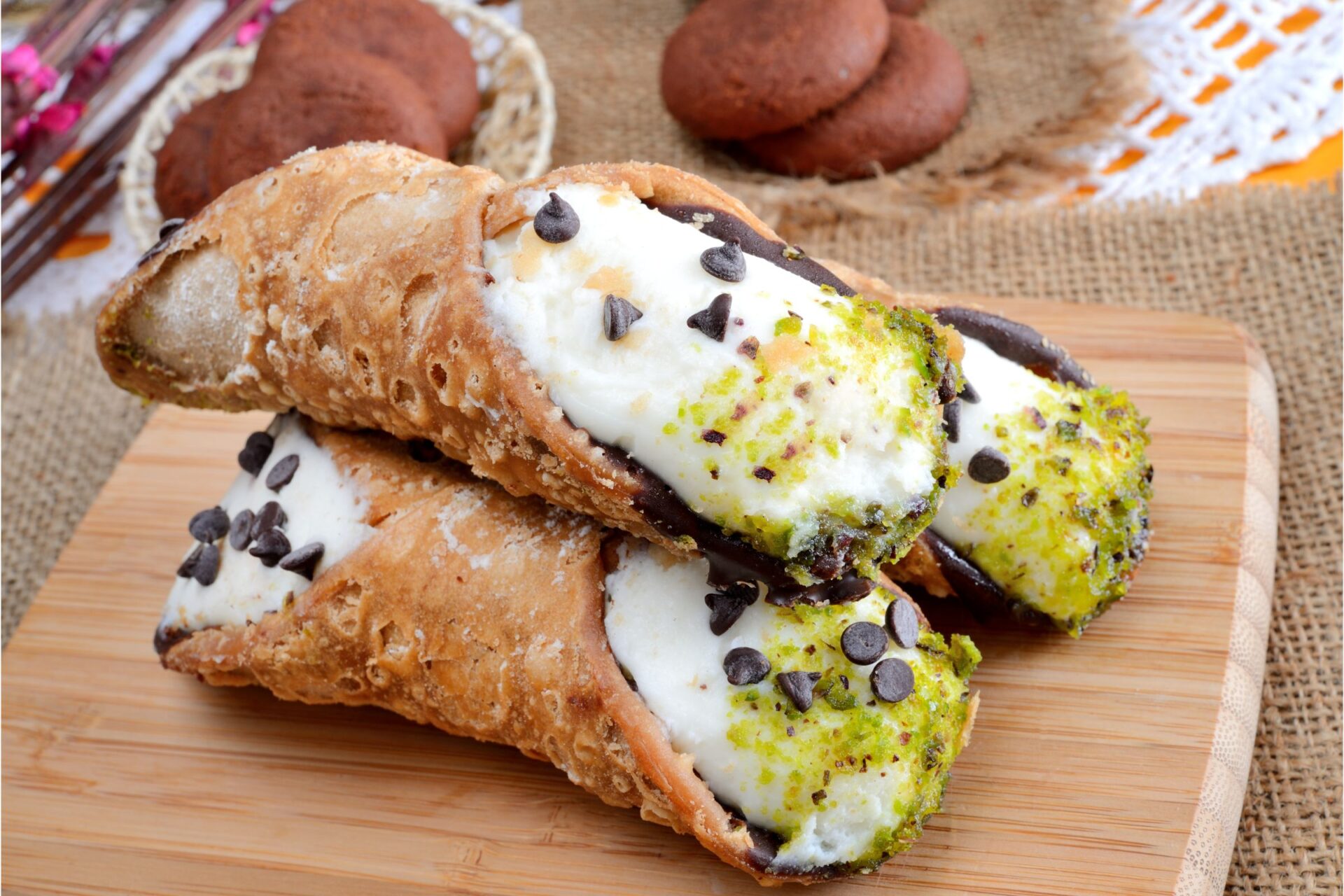
Must-Try Local Delicacies and Street Food Icons
Palermo’s street food scene is an adventure through Sicilian flavors, blending Arabic influences with local traditions in every bite. The city’s streets pulse with sizzling pans and fragrant stalls run by families who’ve been perfecting their recipes for generations.
Panelle: Sicily’s Classic Chickpea Fritters
As I roamed Palermo’s markets, I just couldn’t resist the golden panelle being fried up at nearly every corner. These thin chickpea fritters, with their ancient Arabic roots, are still staples of Sicilian street food.
Vendors usually serve panelle inside a soft sesame bun, sometimes with a squirt of lemon. The crispy outside and creamy, nutty inside made them totally addictive.
For the real deal, I headed to Antica Focacceria San Francesco. They’ve been making panelle since 1834, and honestly, the magic is in the simplicity—just chickpea flour, water, and spices, fried the old-fashioned way.
Spleen Sandwich: The Notorious Pani ca Meusa
Pani ca meusa is not for the squeamish, but it says everything about Palermo’s bold, waste-nothing food scene. I took a deep breath at a tiny stand while the vendor tossed sliced calf spleen and lung into bubbling lard.
He piled the meat into a soft roll and offered two versions: “maritatu” (married) with ricotta or “schettu” (single) without. The ricotta helped me ease into the strong flavors.
To my shock, the taste was mild and savory, with just a hint of earthiness. What really got me was how they turned offal into something you’d actually crave. Locals sent me to Nino u’ Ballerino, where they’ve truly nailed the balance.
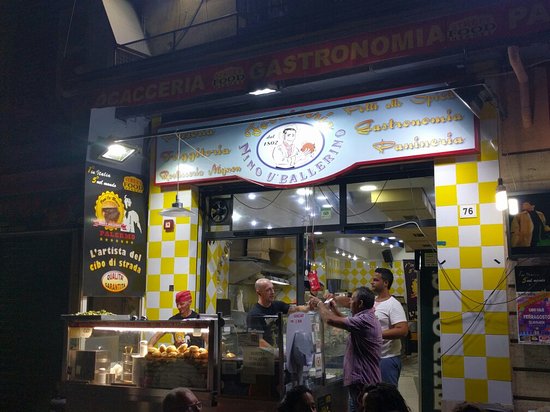
Image Source: Tripadvisor
Cannoli and Ricotta-Filled Indulgences
No Palermo food trip is complete without cannoli. These crispy tubes stuffed with sweet ricotta are the undisputed kings of Sicilian desserts.
The best ones get filled to order, so the shell stays crunchy and the ricotta is super fresh. Some shops add pistachios, candied fruit, or chocolate chips for flair.
Pasticceria Cappello won me over—they piped the creamy filling right before handing it over. The mix of crunchy shell and silky, not-too-sweet ricotta was just perfect.
Gelato and Granita on a Warm Palermo Night
When the Sicilian heat kicked in, I started craving gelato and granita. Sicilian gelato is denser and creamier than what you find elsewhere, often starring local Bronte pistachios.
Granita—somewhere between sorbet and ice—comes in flavors like lemon, almond, or coffee. Locals dip a warm brioche bun right into it.
My favorite? Gelateria La Kala, where I watched the sunset over the harbor with a cup of pistachio gelato so green and flavorful it almost glowed. For granita, Antico Caffè Spinnato has been perfecting theirs since 1860.
Unveiling Palermo’s Markets and Legendary Food Stalls
Palermo’s historic markets go way back to medieval times and, honestly, they offer some of the best street food you’ll ever find. These places are where local culture, history, and unforgettable flavors all collide.
Vucciria Market’s Storied Past
The moment I stepped into Vucciria Market, I felt like I’d time traveled. It used to be Palermo’s most famous fresh market, and even though fewer food stalls stay open during the day now, the vibe is still real.
“Vucciria” comes from the Sicilian word for “voices” or “noise”—which fits, since vendors have been shouting through these streets for centuries.
At night, the market flips into a lively social scene. Locals and tourists mix at tiny bars and eateries. I grabbed a panelle and a glass of local wine, sitting under string lights and soaking up the energy.
The old stone “balate” pavement is still there, even if some stalls have become trendy bars for the nighttime crowd.
Mercato di Ballarò’s Flavorful Mosaic
Ballarò is where Palermo’s market spirit feels most alive. Unlike Vucciria, Ballarò still bustles as a real working market, with locals shopping for their daily ingredients.
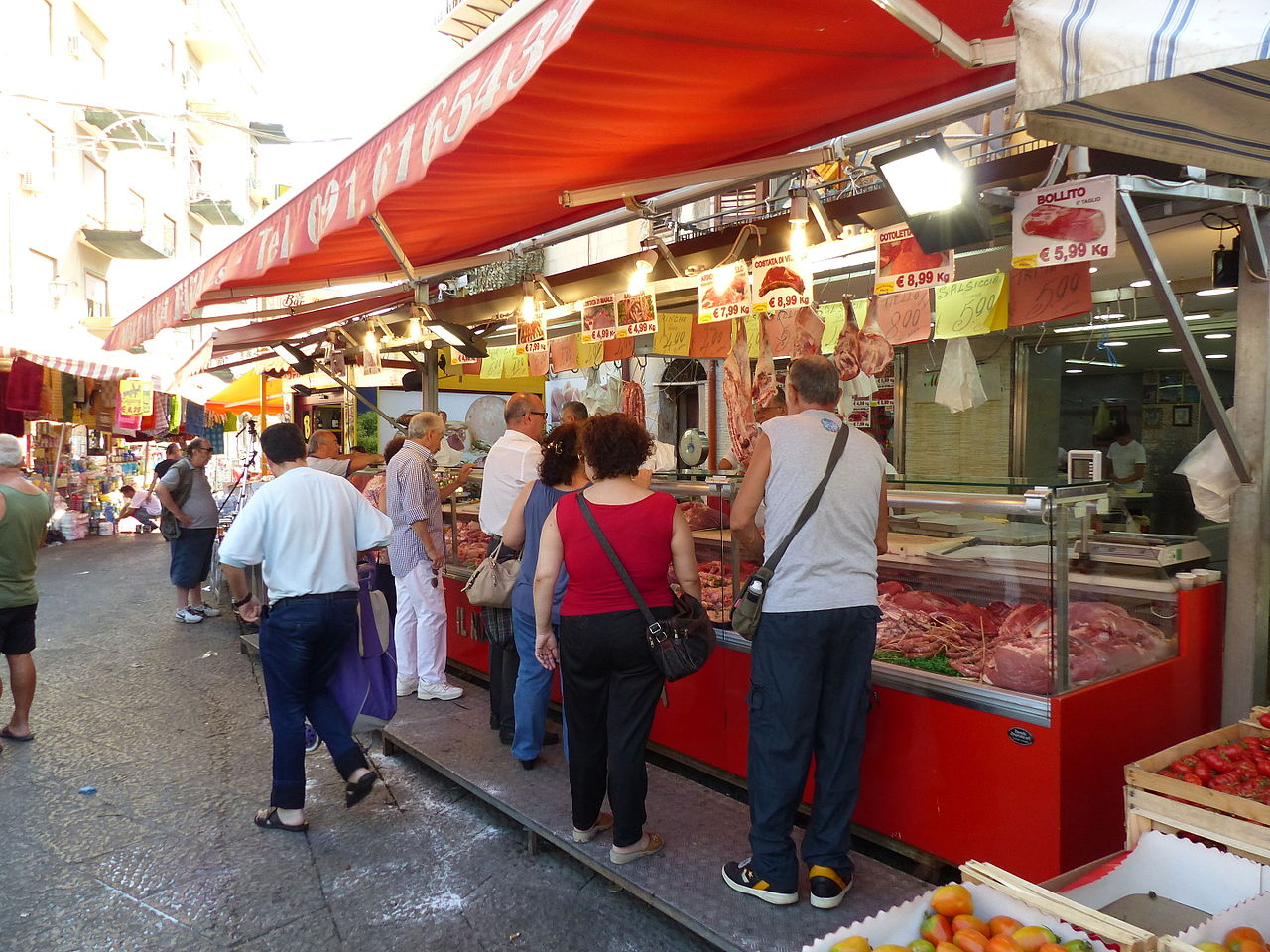
Image Source: Wikimedia Commons
It’s a sensory overload, but in a good way:
- Sights: Piles of bright produce, meats hanging from hooks
- Sounds: Vendors shouting “Abbanniata,” their traditional calls
- Smells: Spices and street food sizzling everywhere
At Ballarò’s stalls, I tried some of the best arancini—crispy, stuffed with ragù, peas, and cheese.
The market winds through the Albergheria quarter, forming a maze of narrow streets packed with everything from seafood to cheese.
Exploring Via Maqueda and Via Roma
Via Maqueda and Via Roma cut through Palermo’s historic center and meet at Quattro Canti. These grand streets offer a different food vibe from the markets.
Along Via Maqueda, I spotted modern cafes next to old-school food stalls. The street feels like a bridge between Palermo’s past and present. With no cars, it’s perfect for a slow food crawl.
Via Roma leans fancier, but if you look, you’ll find hidden gems. I stumbled into a tiny shop with the best cannoli—crisp shells, fresh ricotta, pistachios.
Both streets make it easy to reach other markets like Capo and Borgo Vecchio. I kept zigzagging between these main drags and side alleys, chasing whatever good smell drifted by.
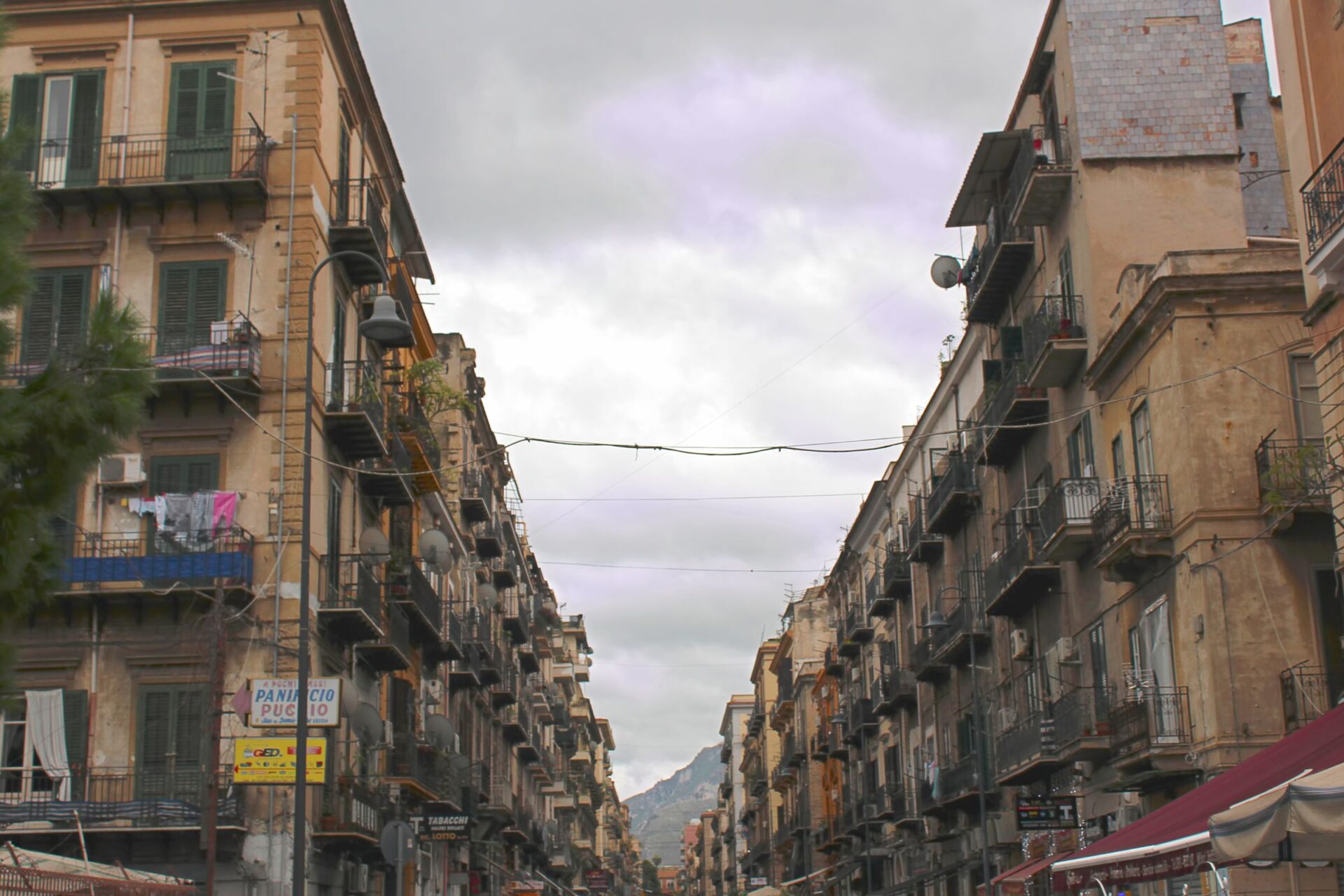
Aperitivo, Sicilian Wine, and Nightlife in Palermo
Once the sun drops, Palermo turns into a city that just wants to hang out. Locals and travelers crowd the streets for drinks and snacks. The passeggiata (evening stroll) and aperitivo ritual are as much a part of Sicilian life as the street food.
Sampling Sicilian Wines and Natural Wine Trends
Sicily’s wine scene honestly surprised me. I tasted bold reds from Nero d’Avola grapes—perfect with all the rich food. The volcanic soils near Mount Etna give their whites a mineral kick that’s super refreshing.
Natural wines are trendy now, and several bars focus on small producers who keep things chemical-free. I found a tiny enoteca near Teatro Massimo, where the owner poured unfiltered orange wine and explained how Sicilian winemakers are reviving old-school methods.
Lots of places offer wine flights, so you can sample a few without going all in on a full glass.
Where Locals Go for Aperitivo
The aperitivo tradition in Palermo feels different. Around 7 PM, locals fill up neighborhood bars for drinks and free snacks. Most people ordered Aperol Spritz or local Sicilian cocktails.
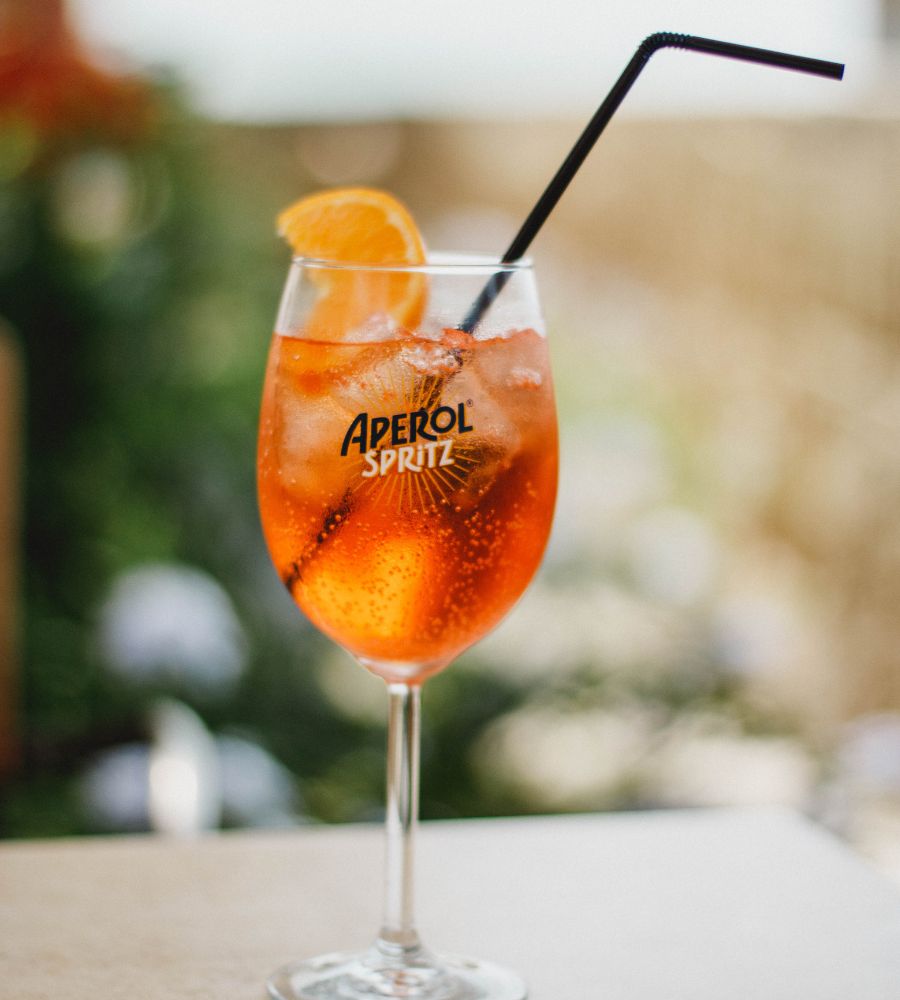
The best aperitivo spots hide away from the crowds. In Vucciria, fruit vendors switch to running bars at night. Outdoor tables spill into the streets, and everyone seems to know each other.
For something fancier, I tried “Seven Restaurant & Rooftop Cocktail Bar” with epic city views. Le Terrazze del Sole was another highlight—I watched the sun set with a glass of Sicilian wine in hand.
Aperitivo plates usually come with caponata, arancini, and bites of sfincione. Honestly, it’s the perfect warm-up for dinner.
Palermo’s Cultural Backdrop: Sights, Stories, and Inspiration
Palermo’s history is everywhere, carved into its buildings, woven into its streets, and alive in its daily rhythms. Wandering the city feels like flipping through a living storybook, each corner revealing a new chapter of its multicultural past.
The Grandeur of Teatro Massimo
I just stood and stared at Teatro Massimo the first time I saw it—Italy’s largest opera house is hard to miss. Its neoclassical front dominates Piazza Verdi, drawing locals and tourists alike to admire its grandeur.
Built from 1875 to 1897, this theater holds nearly 1,400 people. The acoustics blew me away—honestly, I’ve never heard sound so crisp anywhere else.
The place got even more famous after “The Godfather Part III” filmed scenes on its grand staircase. I joined a guided tour (about €8) and got to peek inside the royal box and gaze up at the dazzling dome ceiling.

Image Source: Flickr
The Enchantment of Palazzo dei Normanni and Palazzo Butera
The Palazzo dei Normanni (Norman Palace) stands as Sicily’s most impressive historical building. This UNESCO World Heritage site houses the stunning Cappella Palatina, and I spent nearly an hour just staring at the Byzantine mosaics shimmering with gold leaf.
Norman kings once called this palace home. The building blends Arabic, Norman, and Byzantine styles—a pretty spot-on reflection of Sicily’s wild mix of influences.
Not far away, Palazzo Butera pops up as a symbol of Palermo’s cultural rebirth. This 18th-century palace, recently restored, now buzzes as a contemporary art museum.
Its sea-facing terraces gave me jaw-dropping views of the harbor. I wandered through exhibitions that featured both Sicilian and international artists.
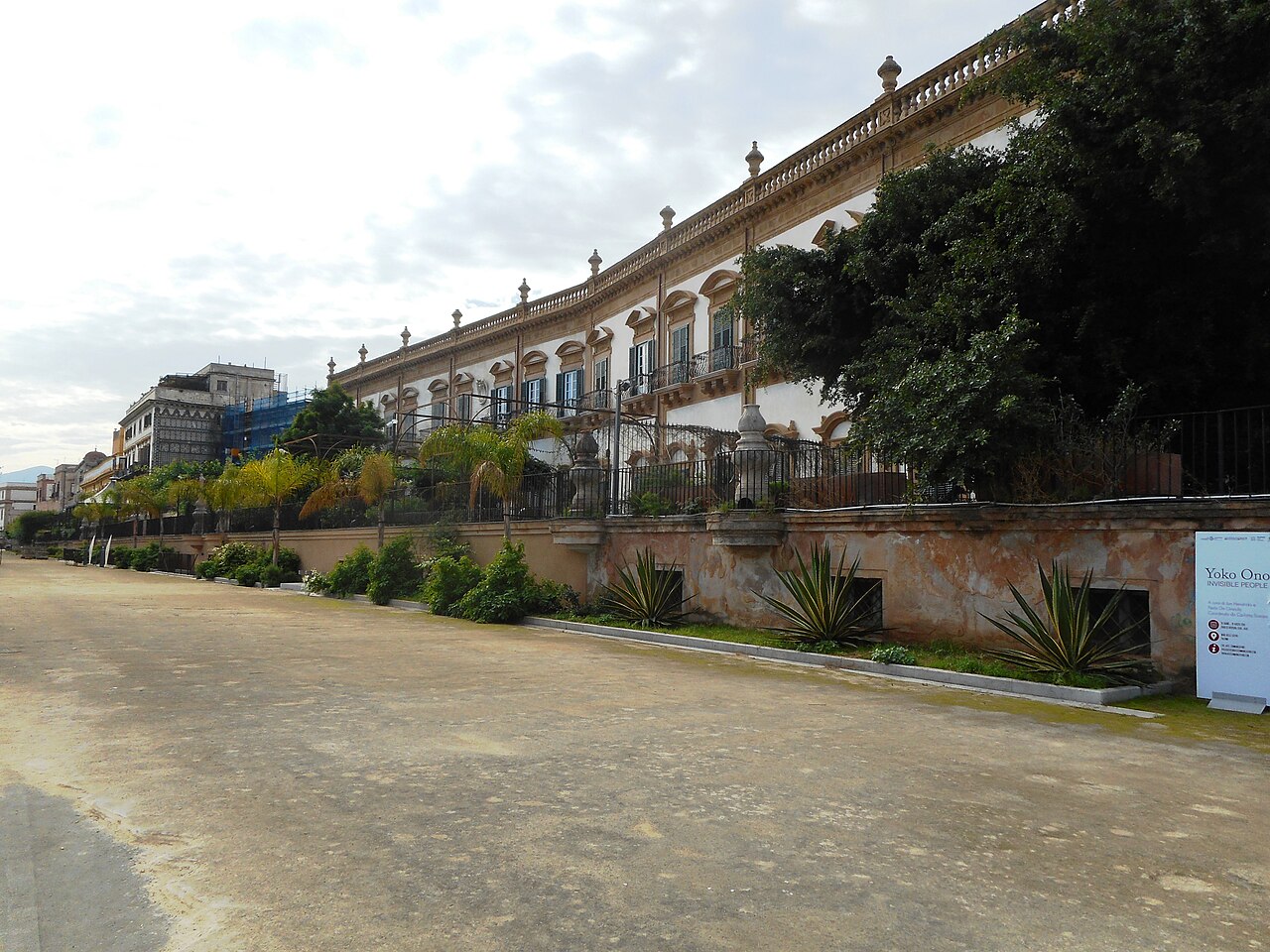
Image Source: Wikimedia Commons
Literary Echoes: ‘The Leopard’ and Sicilian Heritage
As I walked through Palermo, Giuseppe Tomasi di Lampedusa’s “The Leopard” felt like it was happening all around me. The novel captures Sicily’s transformation during Italian unification, all from the perspective of an aristocratic family.
Many places from the book still look almost the same, so it’s like you’re walking through a living literary map. I even visited Lampedusa’s old home, which now serves as a tiny museum dedicated to the author and his famous novel.
The book’s iconic line—”If we want things to stay as they are, things will have to change”—echoed in my mind as I wandered Palermo’s streets. That paradox really nails how Sicilian culture keeps evolving but somehow never loses its core.
Icons: Porta Felice, Piazza San Domenico & Corso Vittorio Emanuele
Porta Felice, that grand baroque gateway, marked my entrance into Palermo’s historic center. Built back in 1582, the twin columns frame a killer view of the sea—a total must for photos.
Piazza San Domenico pulled me in with its central column and the church’s impressive facade. At night, the square buzzes—musicians play, cafés spill out onto the pavement, and the whole place feels alive.
Corso Vittorio Emanuele, Palermo’s oldest street, dates back to Phoenician times and connects the port to the cathedral. As I wandered down this ancient road, I found tiny shops with traditional ceramics, street vendors selling local snacks, and more hidden architectural gems than I could count.
People used to call this road the Cassaro. It’s watched Palermo change for centuries but still acts as the city’s lively backbone.
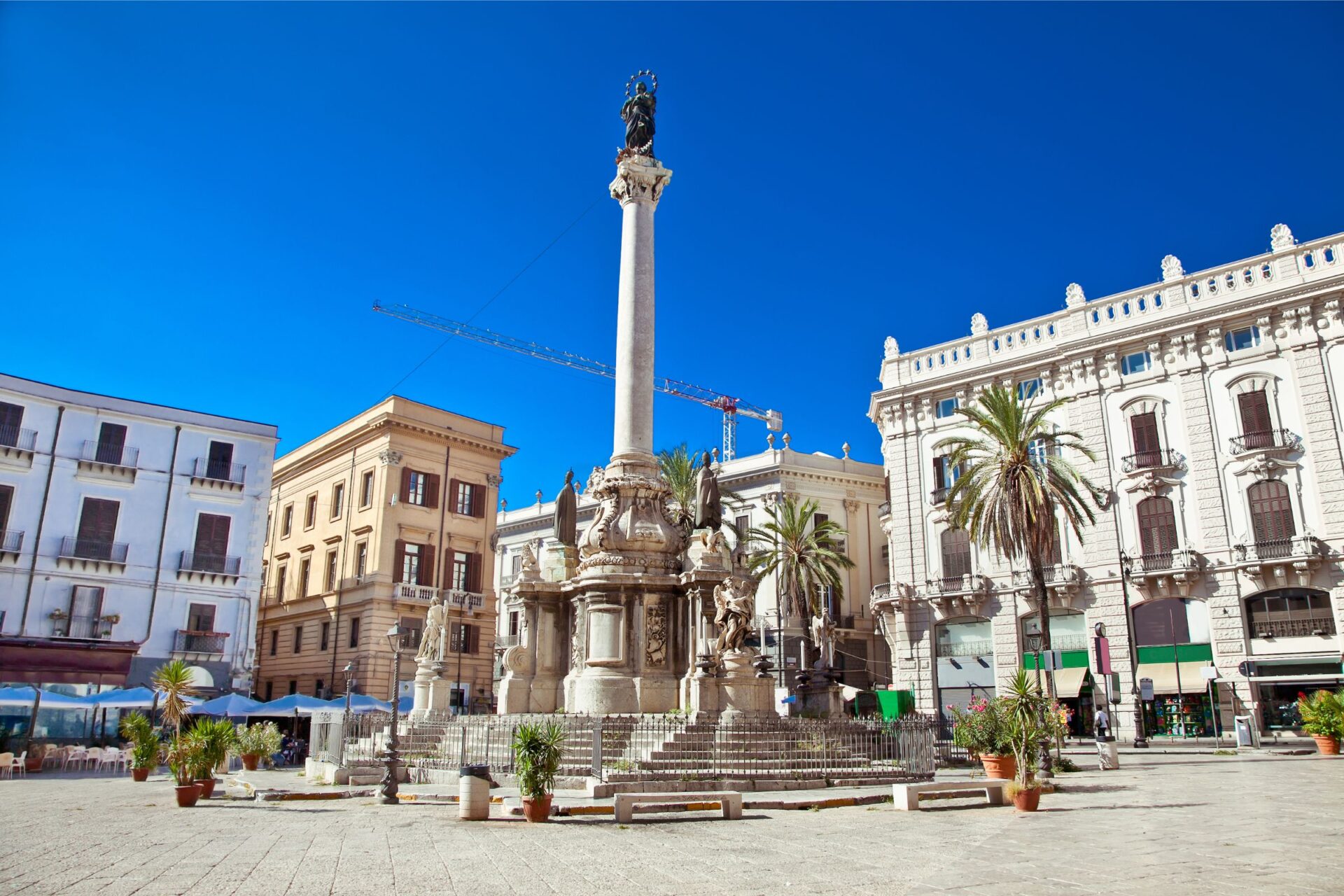
Travel Tips, Hidden Gems, and Unforgettable Moments
Palermo’s magic goes way beyond its famous street food. Travelers get a blend of cultural grit, seaside escapes, one-of-a-kind shopping, and food adventures that stick with you long after you leave.
Anti-Mafia Movements and Palermo’s Resilience
As I explored Palermo, I spotted colorful murals and small plaques honoring anti-mafia heroes. The city has changed a ton in recent decades, shaking off its old reputation but never forgetting those who fought back.
I stopped by the No Mafia Memorial near the historic center. Inside, photographs and documents told the gripping story of Sicily’s anti-mafia movement. The museum packs a punch—it’s small but powerful.
Plenty of local businesses proudly put up “Addiopizzo” stickers to show they refuse to pay protection money. When you support these shops and restaurants, you’re helping push Palermo’s transformation forward.
My tour guide mentioned that many walking tours now include anti-mafia themes. Locals have truly reclaimed their streets and neighborhoods.
A Seaside Escape to Mondello
Just hop on a bus for 20 minutes from Palermo’s busy center and you’ll land in Mondello. It’s a dreamy beach resort that feels a world away from the city’s chaos.
After three days of city wandering, I spent a blissful afternoon here. The crescent-shaped beach, powdery white sand, and crystal-clear turquoise water made me wonder if I’d accidentally ended up in the Caribbean. That Liberty-style pavilion stretching over the water? It’s a photographer’s dream.
Best times to visit Mondello:
- May-June: Warm enough for a swim, not crowded yet
- September: Still great beach weather, fewer tourists
- July-August: Buzzing with locals, but super packed
Grab seafood at one of the beachfront restaurants. I had spaghetti alle vongole (clams) with a cold local white wine as the sunset turned the sky every shade of pink and orange.
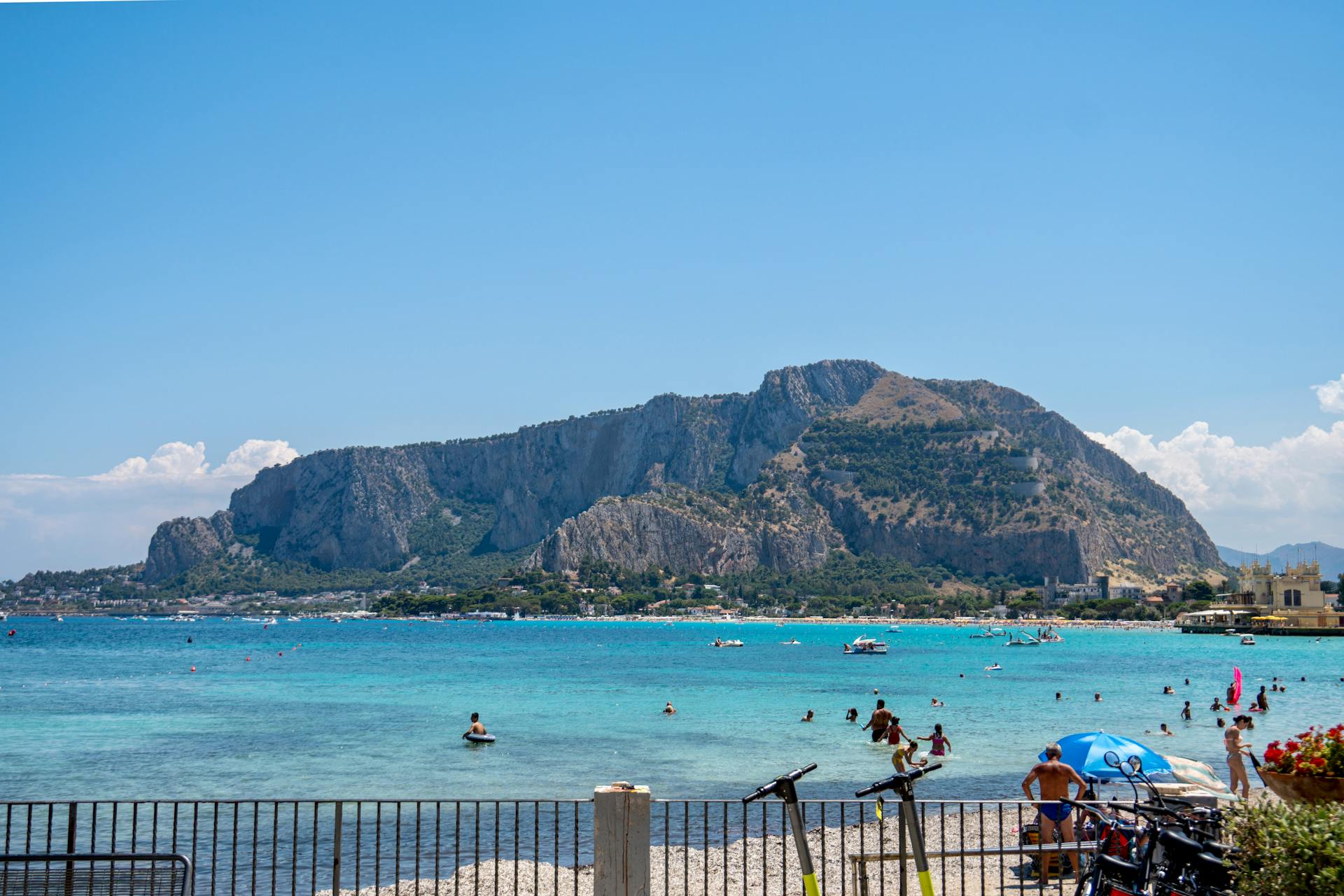
Shopping Unique Palermo Boutiques
Palermo’s shopping scene feels refreshingly different from the usual tourist fare. I stumbled into Vali Boutique near Teatro Massimo, where local designers mix Sicilian flair with modern fashion.
The Kalsa district’s narrow streets hide artisan workshops where craftspeople still make ceramics the old-school way. I picked up a hand-painted plate that now holds my keys—a little piece of Sicily at home.
For edible souvenirs, hit up Mercato del Capo. Besides the fresh produce, stalls offer vacuum-packed Sicilian cheeses, dried herbs, and Bronte pistachios that travel well.
Don’t skip the vintage shops along Via Maqueda. I scored a gorgeous secondhand leather bag there for half what I’d pay back home.
Planning Your Own Palermo Street Food Adventure
Honestly, I think the best way to dive into Palermo’s food scene is to book a guided tour on your first night. My own evening food tour took me to seven tastings and three drinks in just three hours. That really set the stage for all the Sicilian specialties I’d try after.
If you want to visit markets like Ballarò, Capo, or Vucciria, go in the morning. Vendors seem friendlier before noon, and you’ll catch locals picking up their daily ingredients.
Must-try street foods:
- Arancina (fried rice ball—Palermo insists it’s feminine!)
- Pane con la milza (spleen sandwich; trust me, it tastes way better than it sounds)
- Sfincione (soft, spongy Sicilian pizza)
- Cannoli (they fill these fresh when you order)
Try learning a few Italian phrases before you go. Whenever I started with a cheerful “Buongiorno” and ordered in simple Italian, vendors often gave me extra big portions and the warmest smiles.

